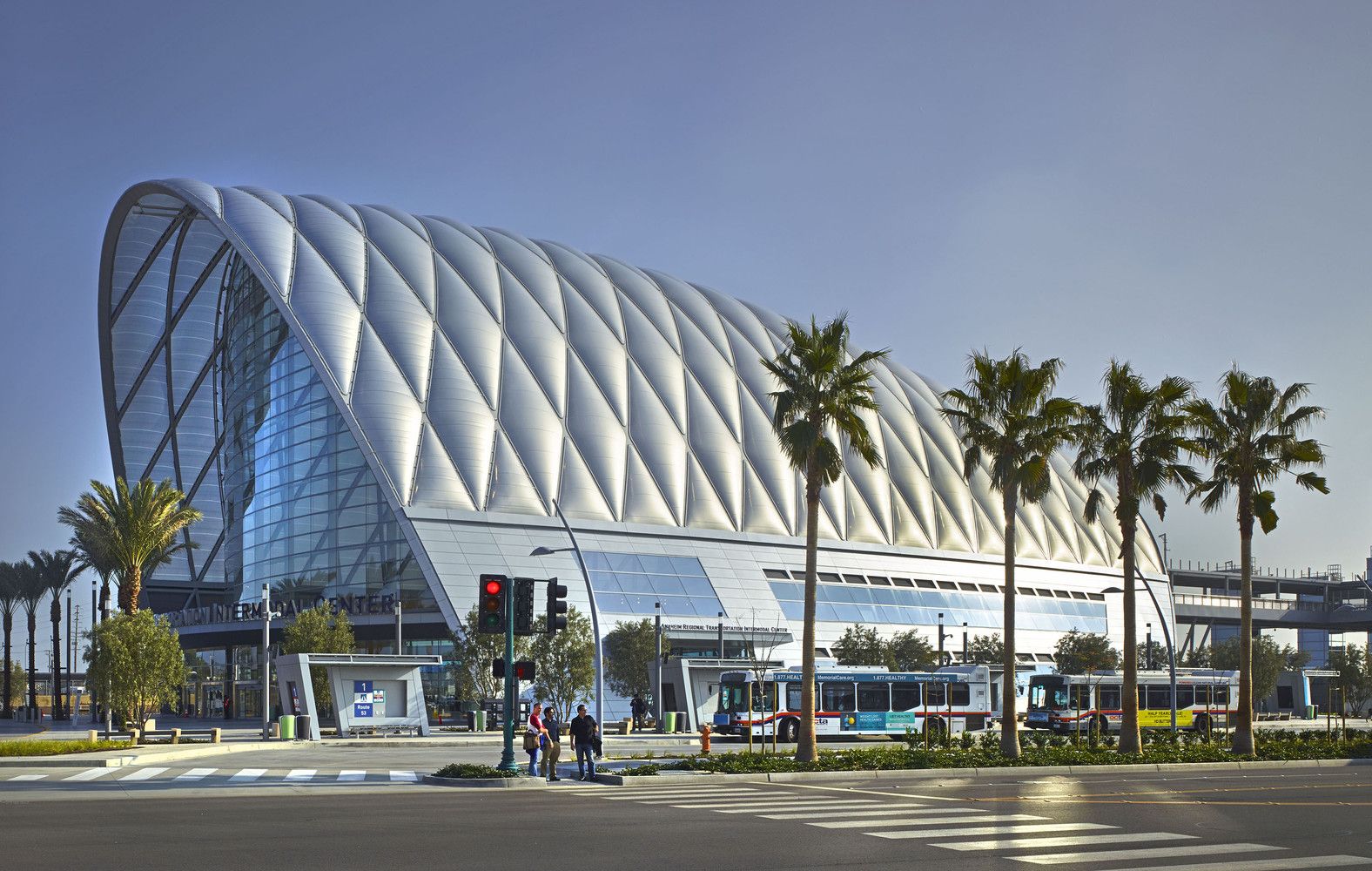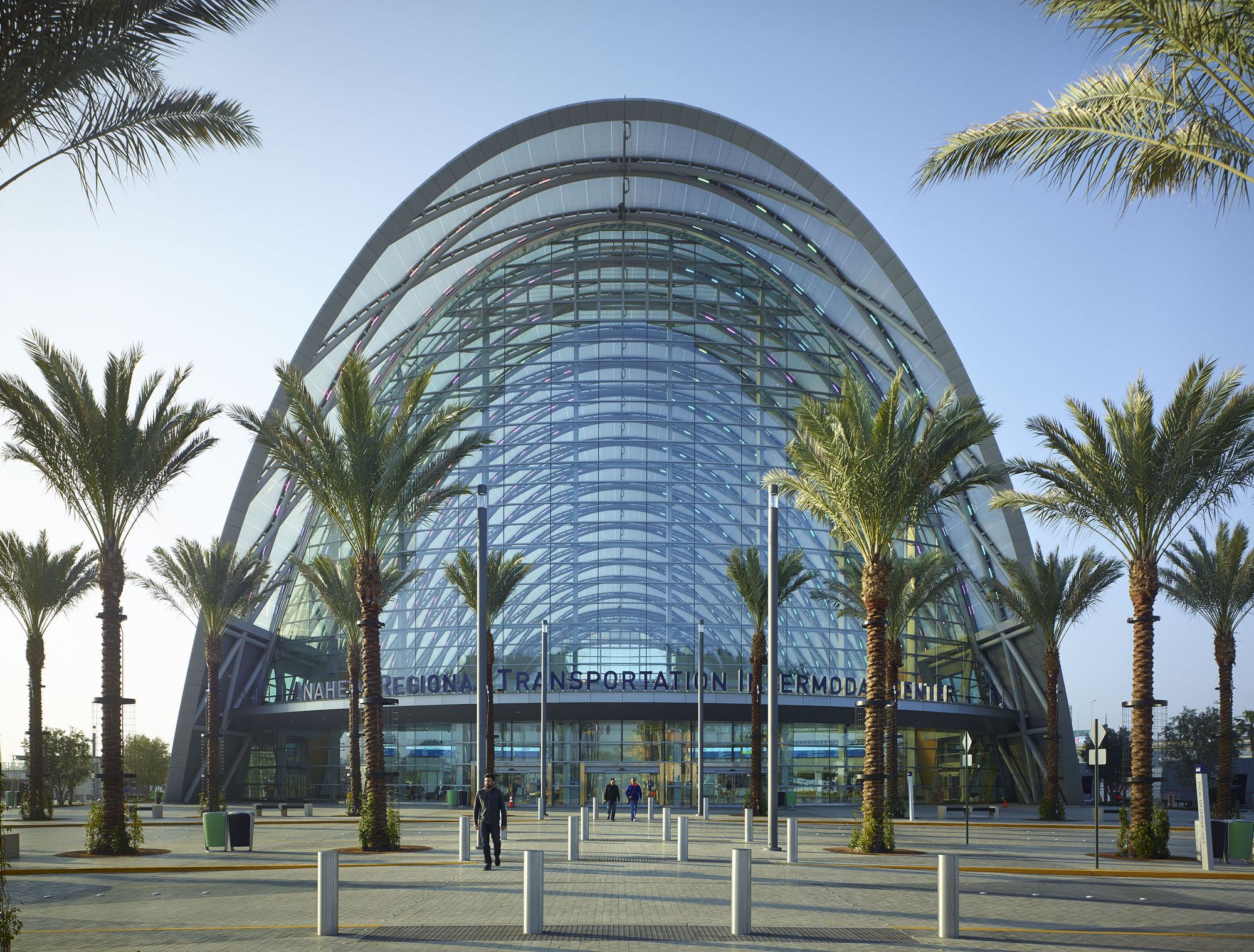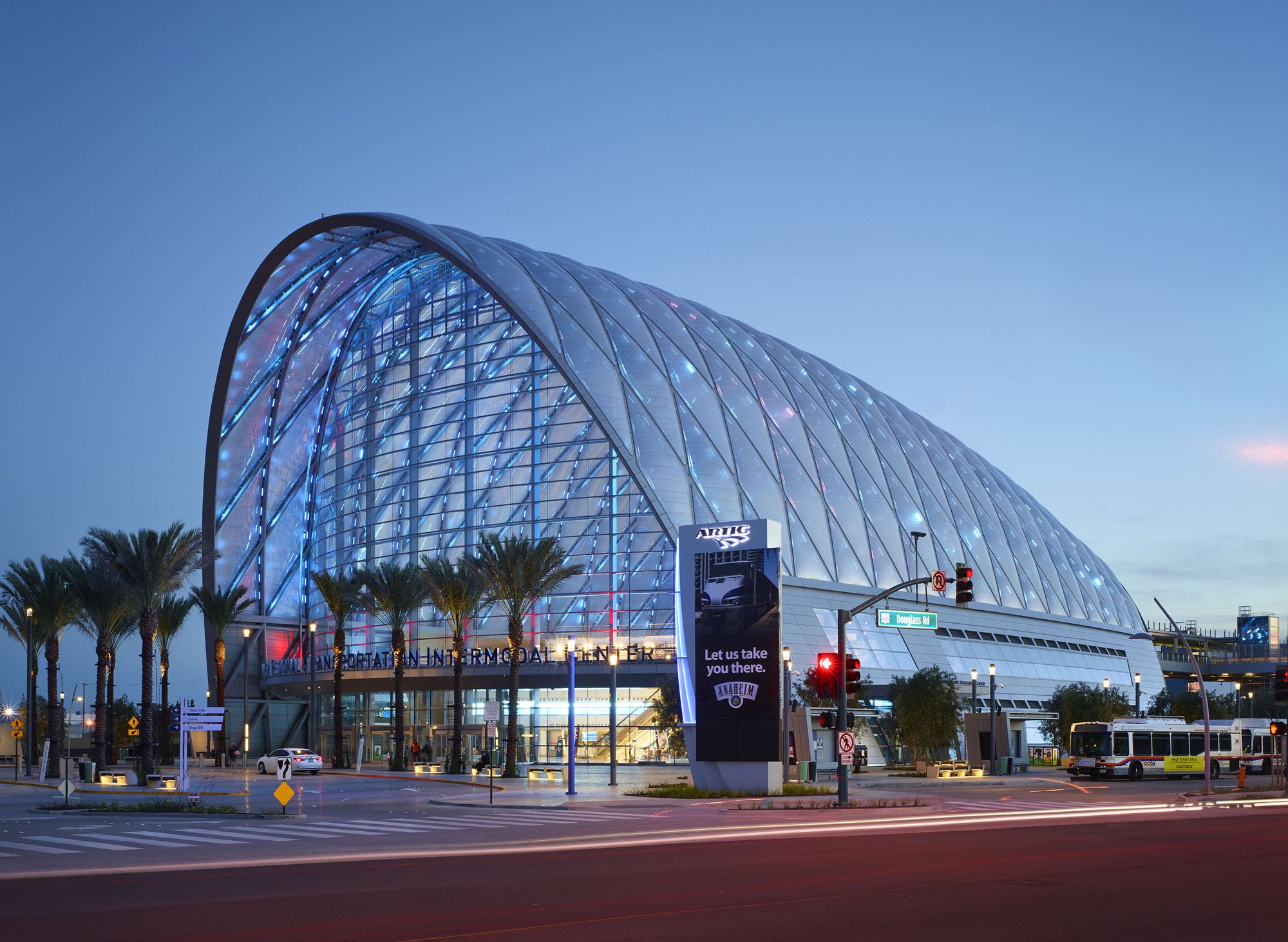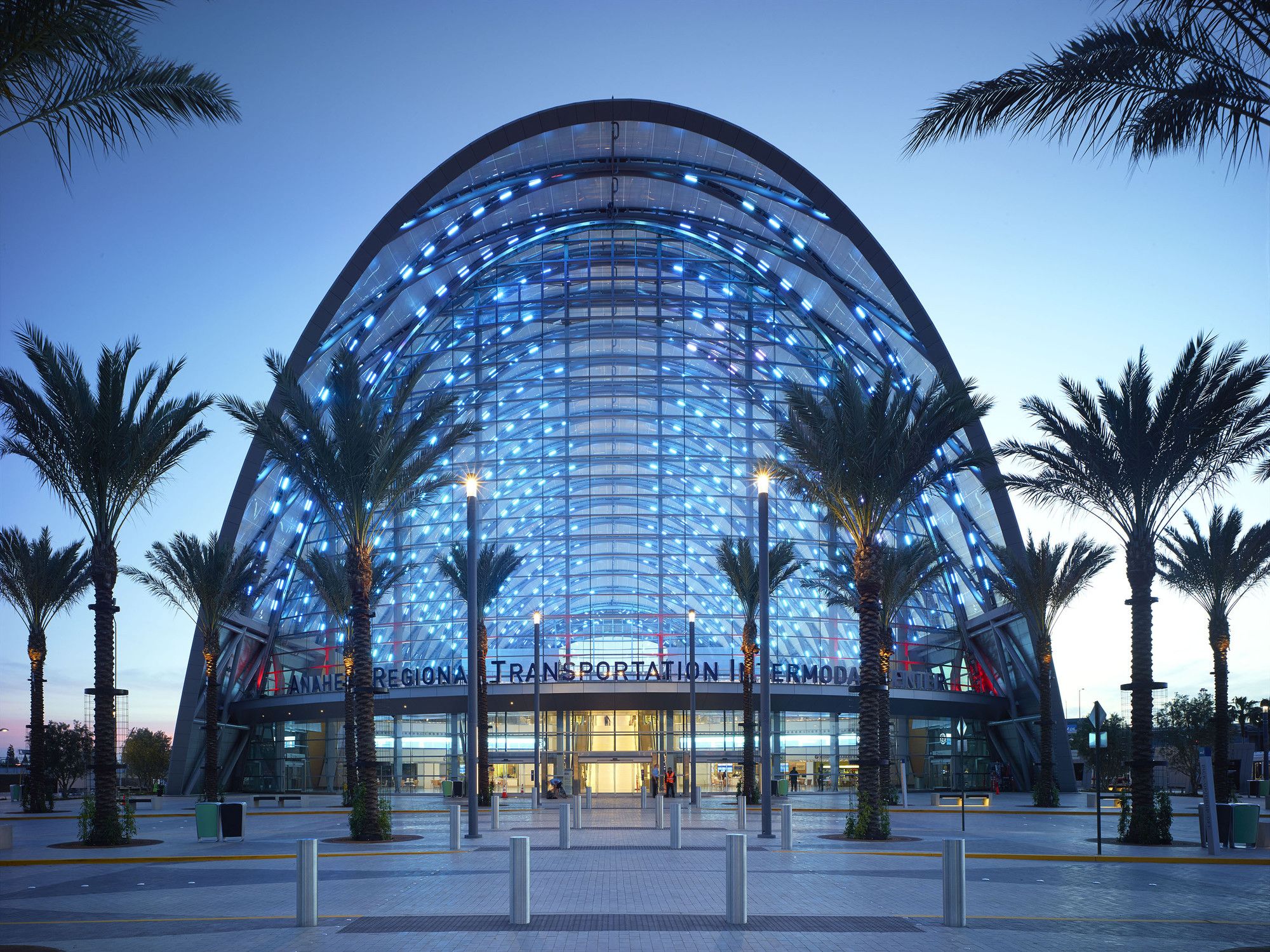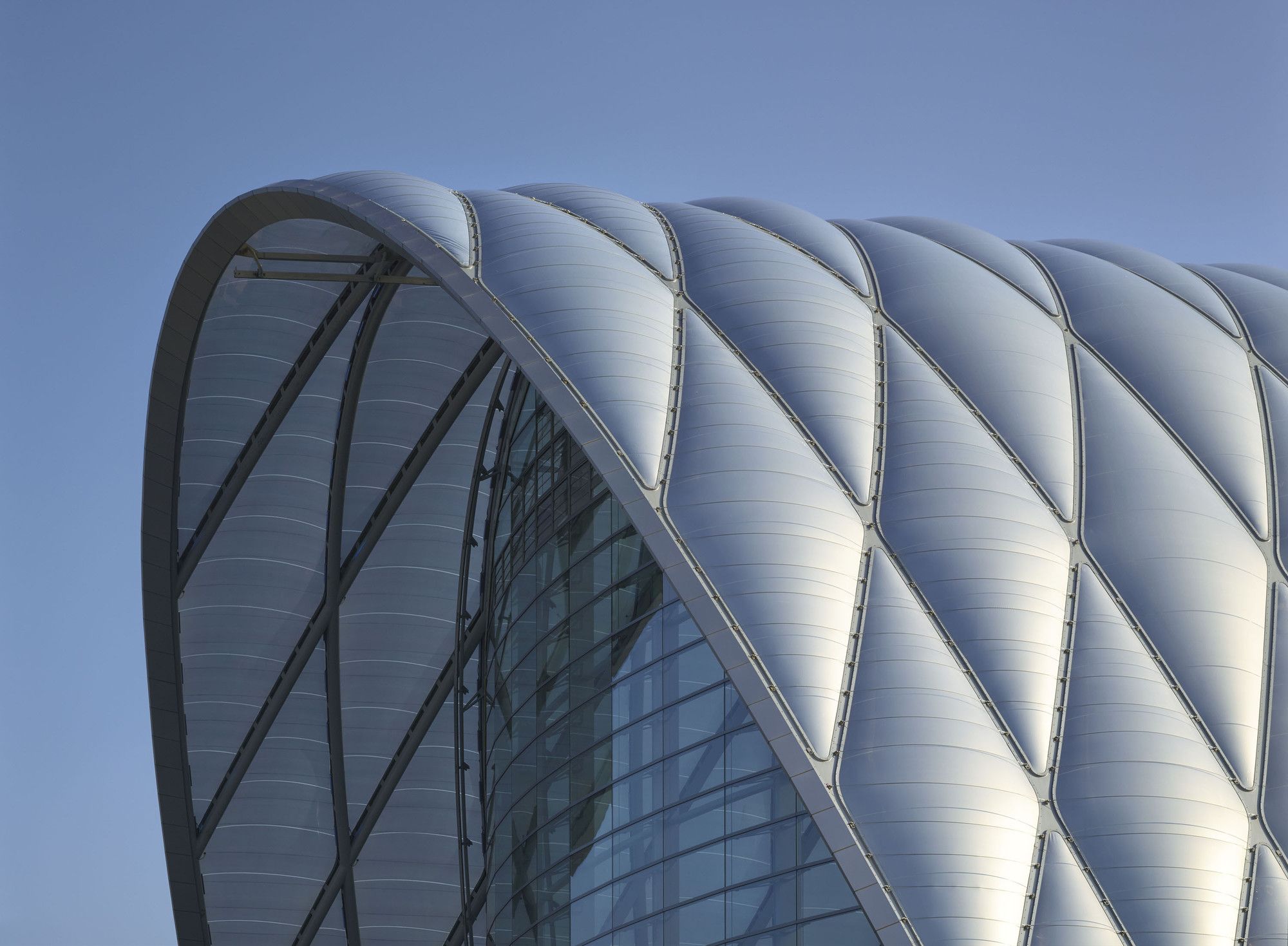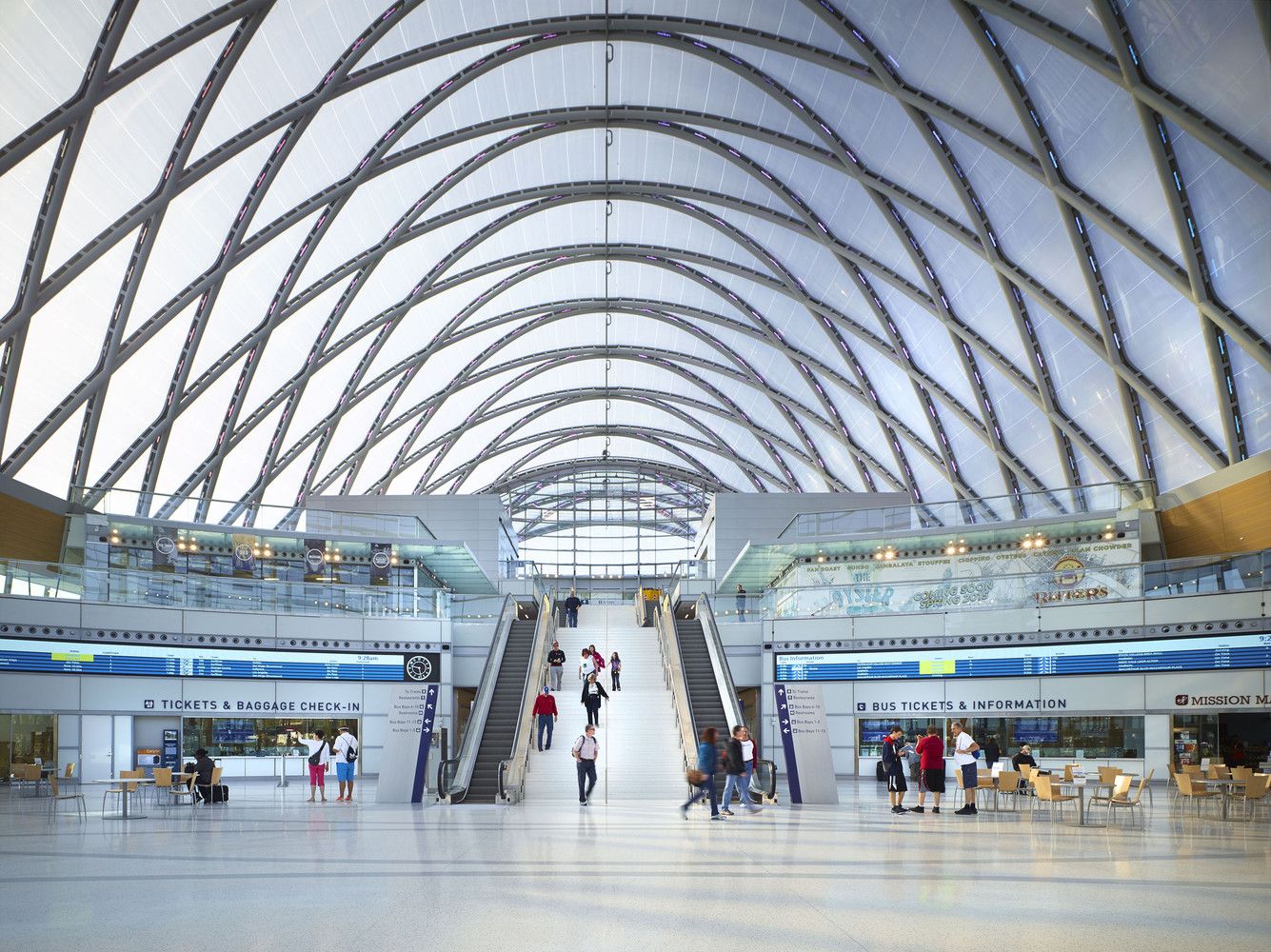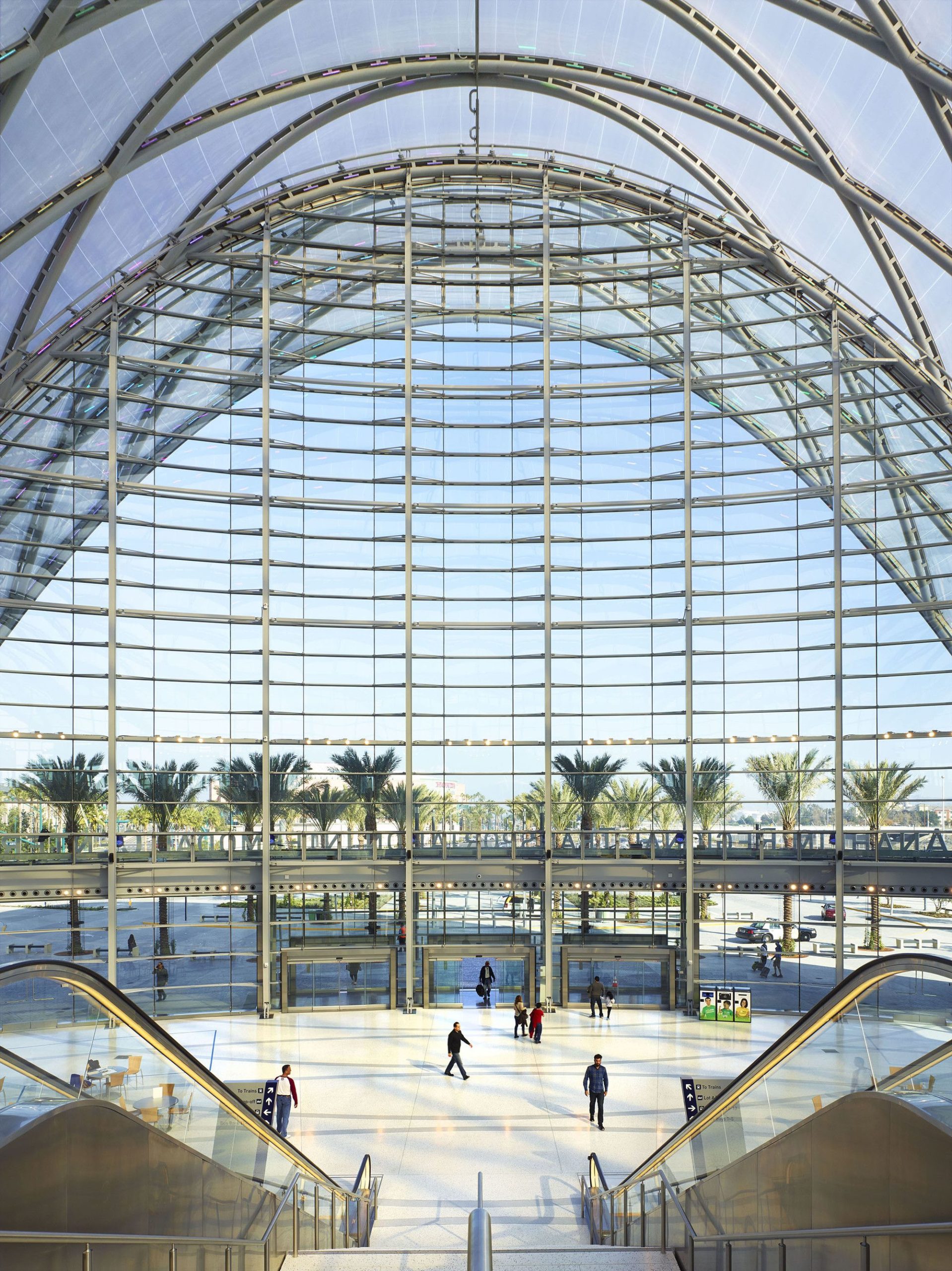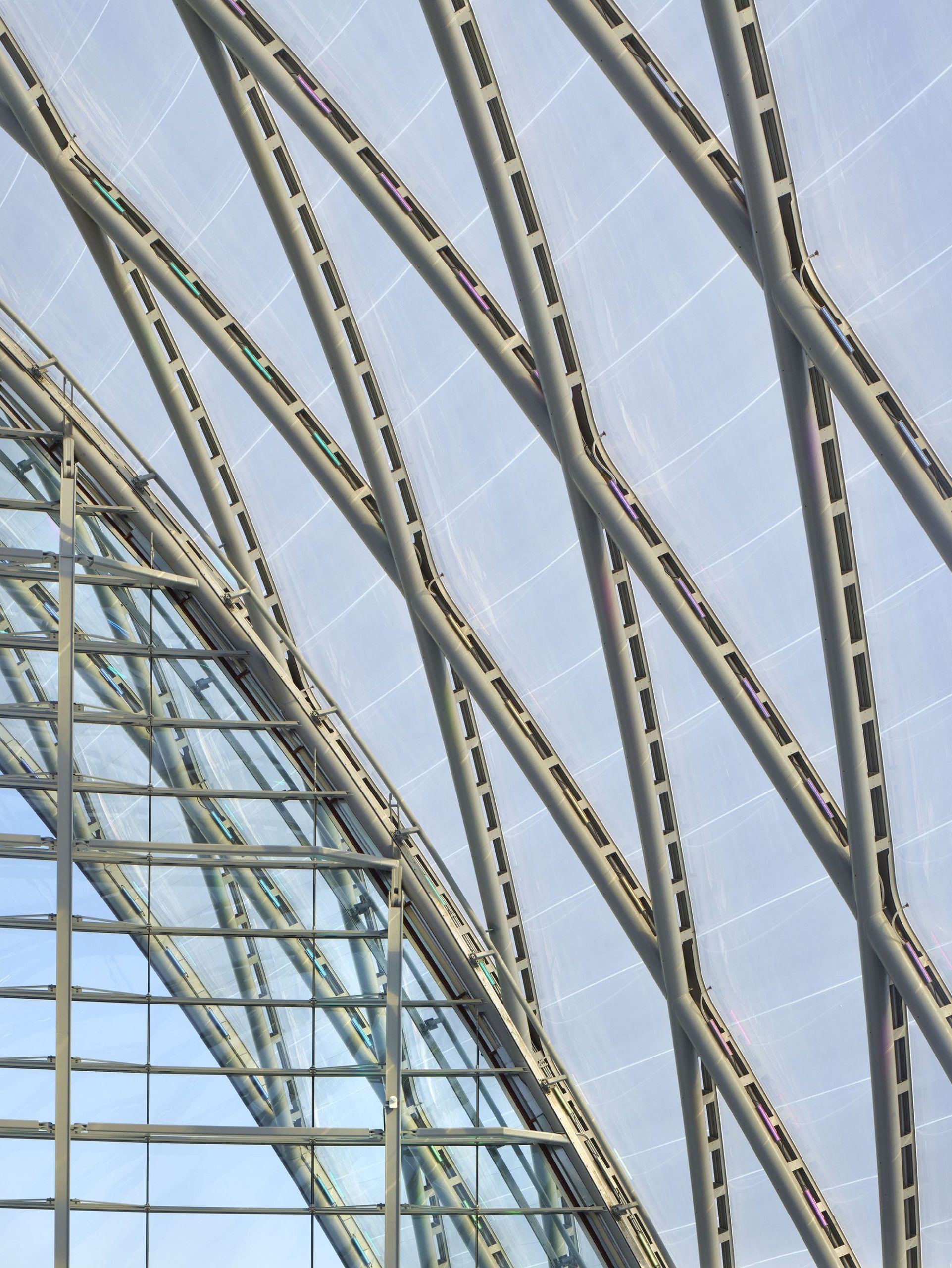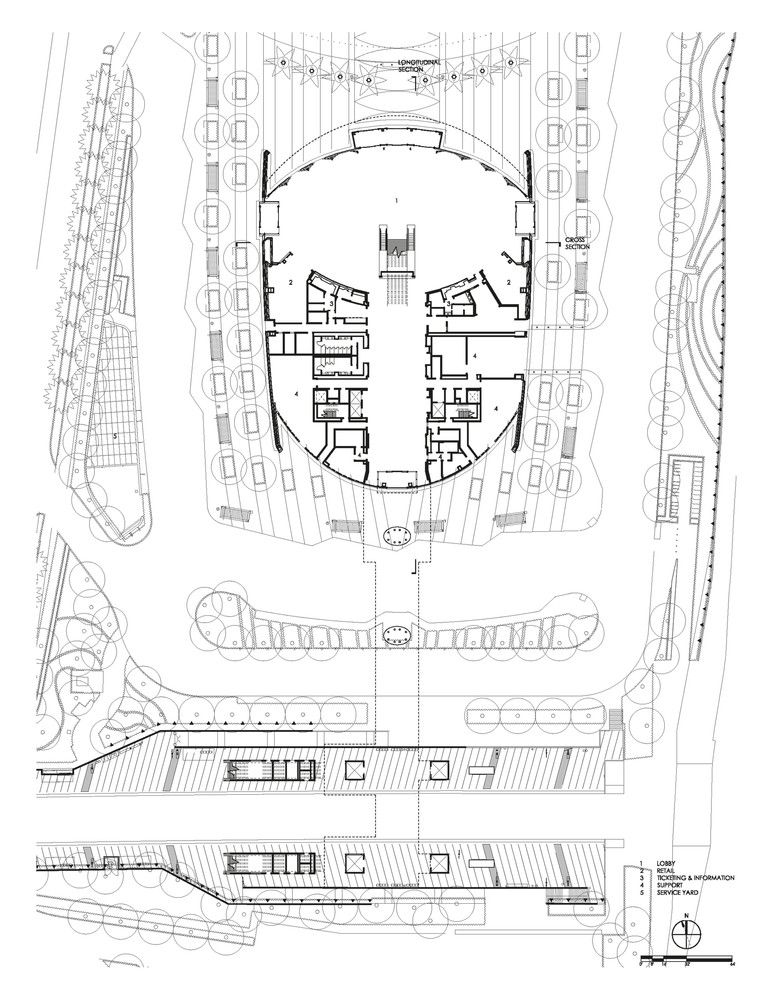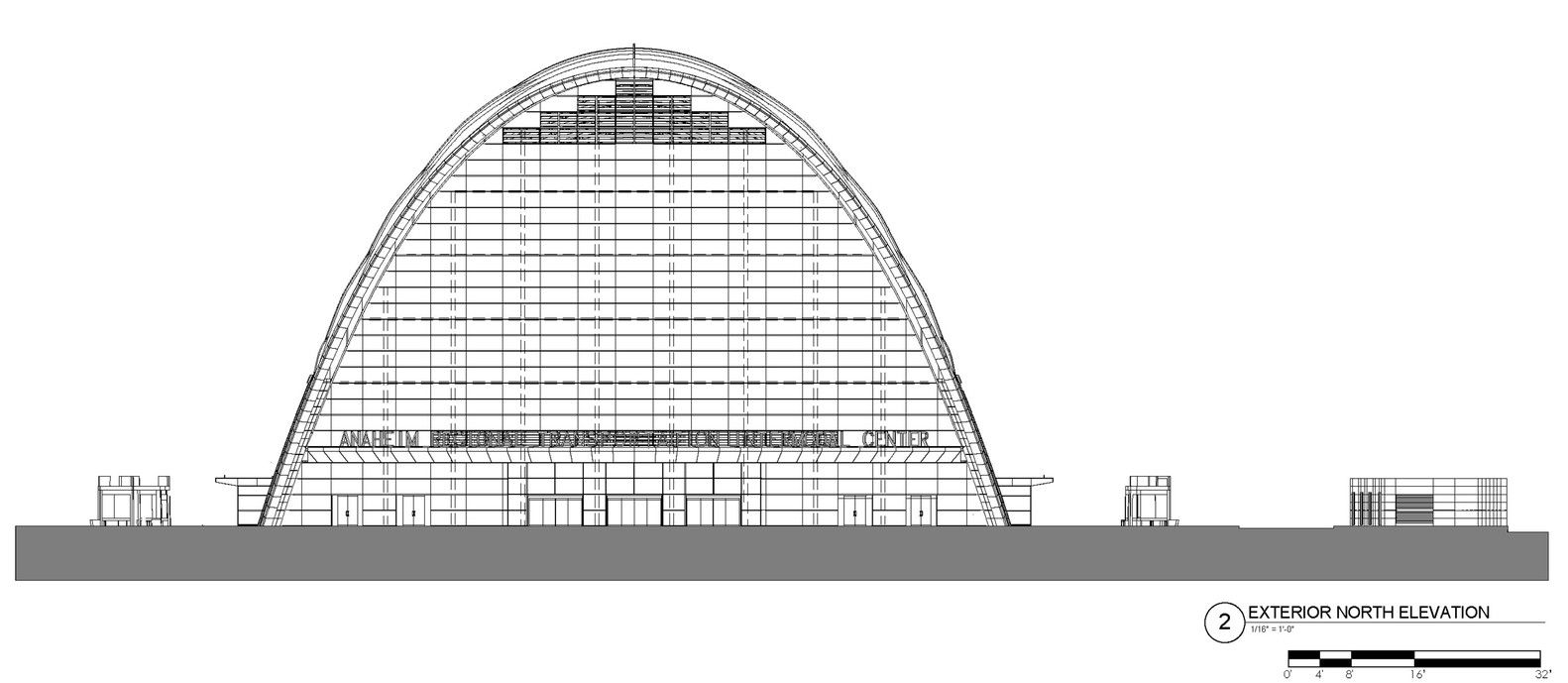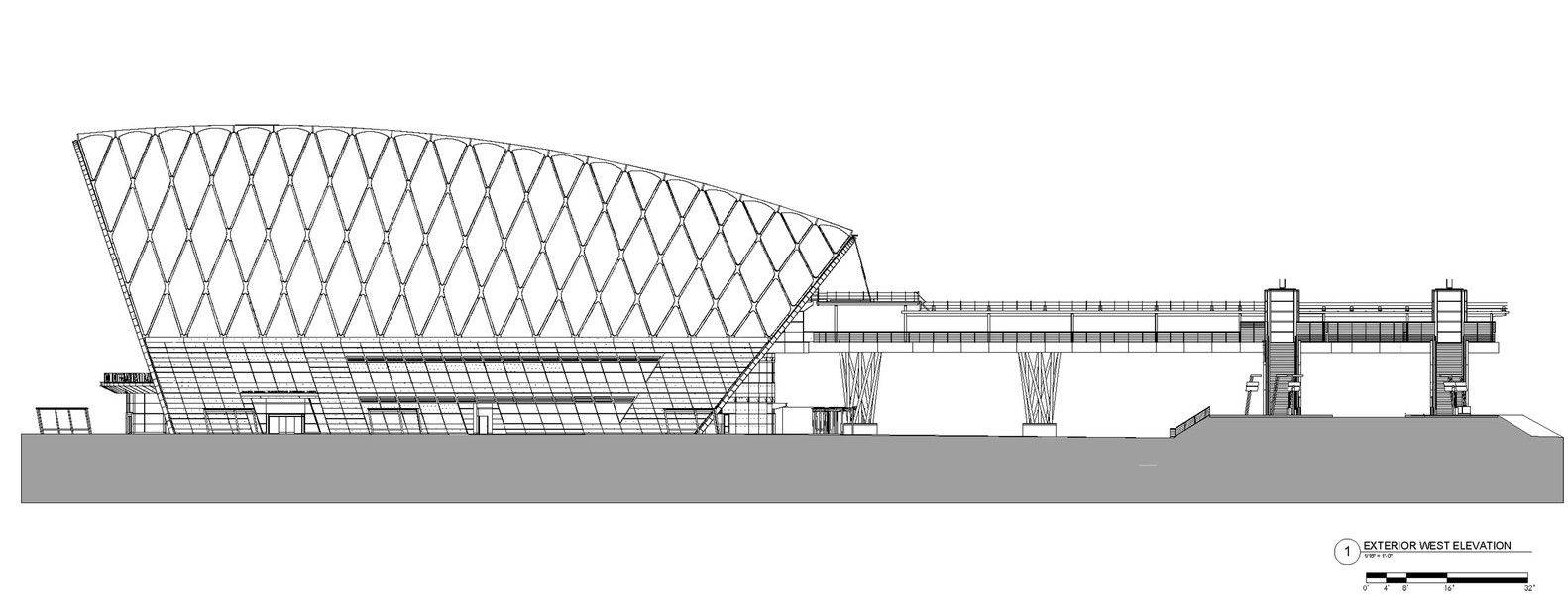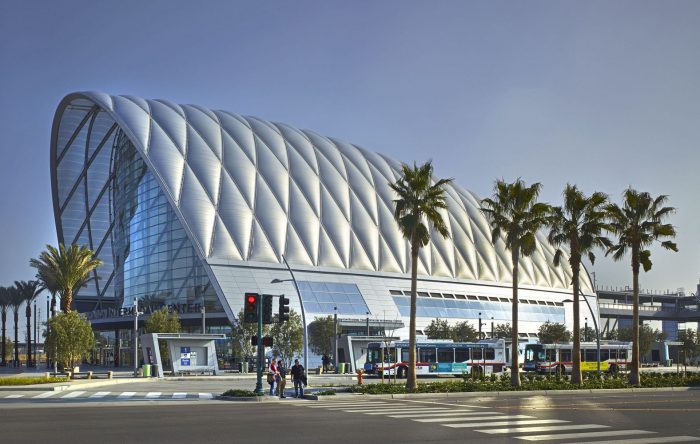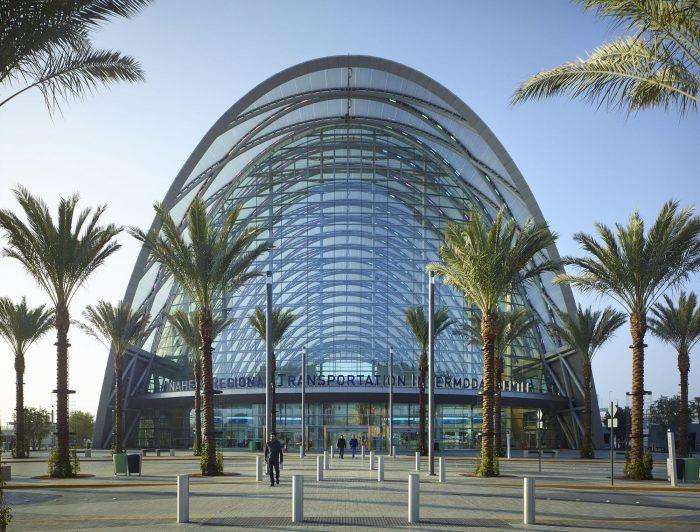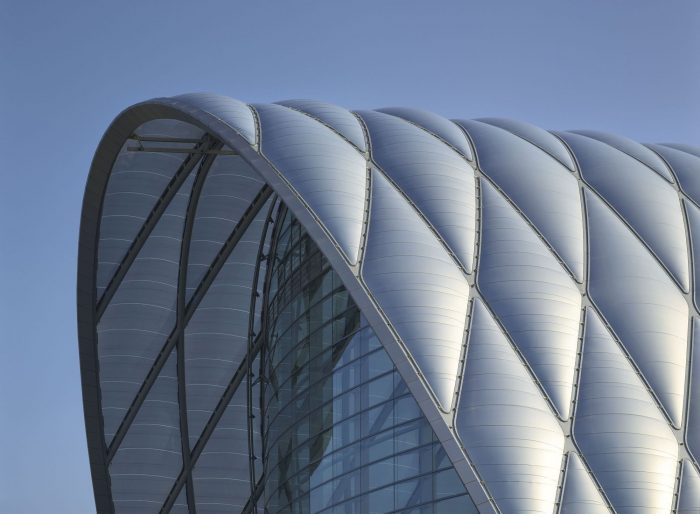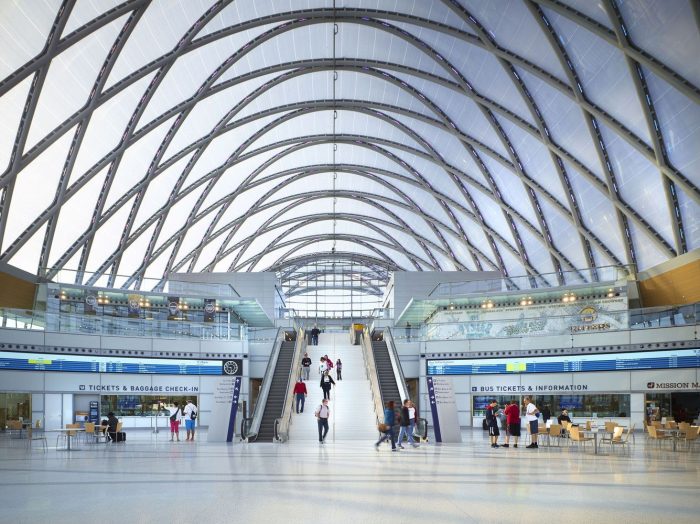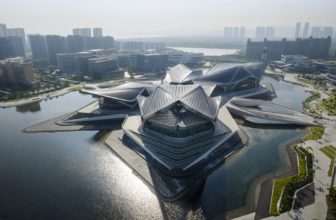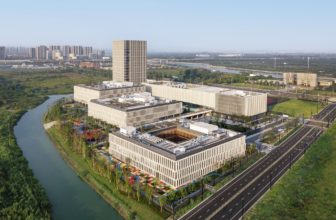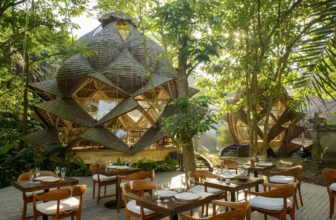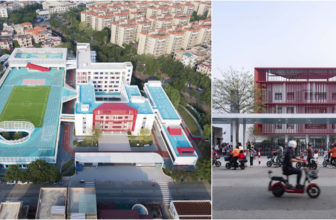Being the winning project of an International Competition, HOK and Parsons Brinckerhoff designed Anaheim Regional Transportation Intermodal Center (ARTIC) as an innovative new transit station that serves as a destination in itself. The project brings together transit, dining, retail and entertainment options in an iconic terminal building. It evidently represents the next generation of public transportation in Southern California.
“It is an innovative piece of architecture. The form is one of beauty and simplicity. The use of integrated design and modeling optimized the structure,” AIA Technology in Architectural Practice Award Jury commented.
Projected to serve the transportation needs of more than three million people annually in the coming years, the 67,000 square feet, transit hub links commuters, regional rail service and intercity bus systems, including Amtrak, Metrolink, OCTA bus service, Anaheim Resort Transportation (ART), Megabus.com and Greyhound. ARTIC’s flexible design ensures that it can serve as a southern terminus for California’s future high-speed rail system. In addition to accommodating passenger arrivals, departures and transfers, ARTIC integrates amenities such as transit-oriented retail, Wi-Fi and charging stations, parking, bike racks, lockers, community space and specialty dining.
Officials challenged the team to create an icon that would welcome a new age of public transportation. The station was also conceived as a catalyst for transforming Anaheim’s core into a pedestrian-friendly zone that promotes connectivity. Known as the Platinum Triangle, the area around the station includes the Angel Stadium, the Honda Center, the Anaheim Convention Center and the Disneyland. The master plan establishes a clear pedestrian pathway flanked by future mixed-use development with ARTIC as the primary destination. The extroverted building has a significant but welcoming presence and will help spur transit-oriented development.
Drawing inspiration from classic grand transit halls including Grand Central Terminal in New York, along with the structural elegance of local airship hangars, the team developed a 21st century design concept for the forward-looking transit facility. The design achieves ARTIC’s signature parabolic form by employing a diagrid structural system of diamond-shaped steel arches infilled with translucent ETFE (ethylene tetrafluoroethylene) pillows. At the north and south ends, freestanding curtain walls bring in daylight and open the building to views. The long-span, grid shell structure creates a grand, light-filled atrium space that accommodates open circulation.
The design team used Building Information Modeling (BIM) to develop ARTIC’s complex form, geometry and functions, to navigate the complexities of the building systems and to study the building’s tolerances and environmental performance. “By using BIM, we were able to optimize and coordinate the precise geometry of the vaulted diagrid shell, ETFE facade technology, metal panel rain screen systems and glass”, said Albert Kaneshiro, AIA, LEED AP, HOK’s Project Manager. “BIM allowed us to match ETFE connections with the geometry of the steel in a structure that is constantly expanding and contracting”.
Based on the city’s goals for sustainability, the team designed ARTIC for U.S. Green Building Council LEED Platinum Certification. The vault-shaped structure acts in concert with advanced mechanical systems to optimize energy efficiency. Inflated ETFE cushions cast a soft, translucent light throughout the great hall, while the additional frit pattern on the outer layer reduces solar heat gain. Convection currents naturally ventilate the building as heat rises from the lower south end up to the north side and out through operable louvers. The radiant heating and cooling floor system and optimized HVAC system will help reduce ARTIC’s energy consumption by 50 percent.
LEDs mounted on the diagrid structure illuminate the ETFE pillows in gradations of shifting colors, providing a striking presence on the night skyline. As darkness falls, ARTIC becomes lit from within and acts as a beacon from the freeways and local streets.
HOK’s Aviation+Transportation Group designs high performance passenger terminals, stations, intermodal facilities, automatic people mover systems, light rail systems and other transportation amenities. Recent A+T projects include the Hamad International Airport Passenger Terminal Complex in Doha, Qatar, the Salt Lake City International Airport Terminal Redevelopment Program, the Union Station Master Plan in Washington, DC, Indianapolis International Airport Colonel H. Weir Cook Terminal and the PHX Sky Train at Phoenix Sky Harbor International Airport.
“ARTIC is a community-focused building that will change how people think about public transportation”, said Ernest Cirangle, FAIA, LEED AP, Design Principal for HOK’s Los Angeles office. “This iconic facility is a symbol of a new era of public transit and was only made possible because of city leaders’ unwavering commitment to a contemporary and bold design”, he added.
Project Information:
Project: Anaheim Regional Transportation Intermodal Center (ARTIC)
Architect: HOK, Parsons Brinckerhoff
Location: 2626 East Katella Avenue Anaheim, Orange County, CA, USA
Construction Period: 2014
Owner: City of Anaheim
Operator: Amtrak
Previous Name: Anaheim Station, Anaheim
Number of Bus stands: 13
Bus Operators: OCTA, Anaheim Resort Transportation,Greyhound, Megabus, Tres Estrellas de Oro
Station code: Amtrak: ANA
Interior Design: HOK
Urban Design: HOK
Structural Engineer: Thornton Tomasetti
MEP and Enclosure Engineer: Buro Happold
Landscape Designer: SWA
General Contractor: Clark Construction
